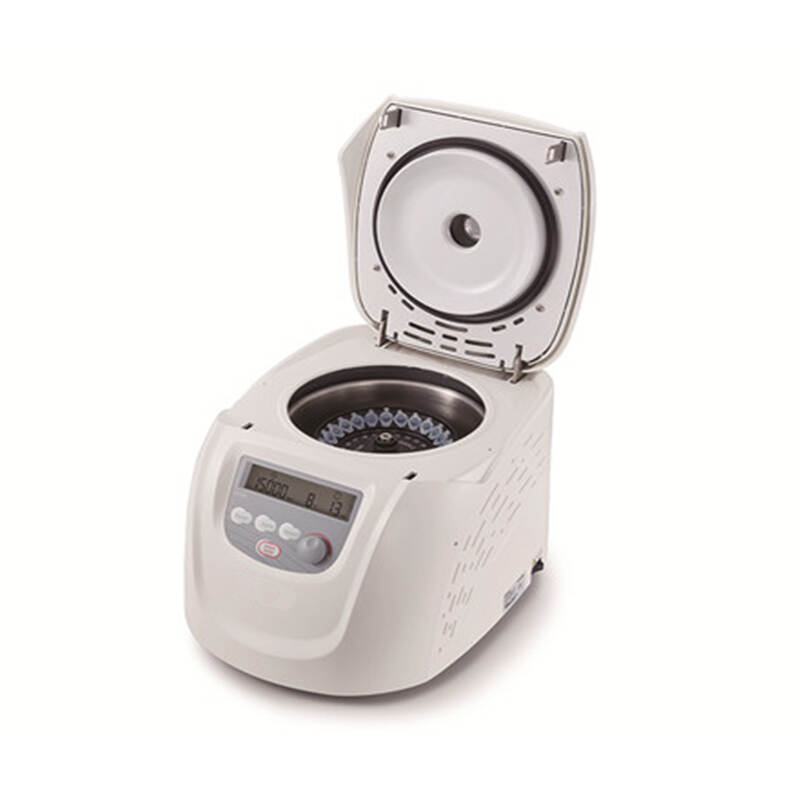The Power of the Stat Spin Centrifuge: Revolutionizing Laboratory Research
October 12,2023
In the world of scientific research, the stat spin centrifuge has emerged as a game-changer. With its advanced technology and unparalleled efficiency, this centrifuge has become an indispensable tool for scientists and researchers across various disciplines. In this blog post, we will explore the capabilities and benefits of the stat spin centrifuge, highlighting its impact on laboratory research.
The Evolution of Centrifugation?
Centrifugation has long been a fundamental technique in laboratory research, enabling the separation of substances based on their density. Over the years, centrifuges have evolved from bulky and time-consuming machines to compact and high-speed devices. It represents the pinnacle of this evolution, offering researchers a powerful and efficient tool for their experiments.
The stat spin centrifuge, with its innovative design and cutting-edge technology, has revolutionized the field of centrifugation. Gone are the days of large, cumbersome machines that took up valuable bench space. The compact design allows for easy integration into any laboratory setup, saving space and improving workflow efficiency.
Unleashing the Power of the Stat Spin Centrifuge?
It boasts a range of features that set it apart from its counterparts. Its high-speed capabilities enable rapid sample processing, significantly reducing experimental time. With a maximum speed of 15,000 RPM, it can quickly separate substances based on their density, allowing researchers to obtain purified samples in a fraction of the time compared to traditional centrifuges.
Furthermore, its advanced rotor design allows for the simultaneous processing of up to 24 samples in a single run. This not only increases efficiency but also ensures consistent and reliable results. Researchers can now process larger sample volumes without compromising on quality or speed.
Enhanced Efficiency with the Stat Spin Centrifuge?
One of the key advantages is its ability to handle multiple samples simultaneously. With its innovative rotor design, researchers can process up to 24 samples in a single run. This not only increases efficiency but also ensures consistent and reliable results.
Its versatility extends to its compatibility with various tube sizes, including microtubes and PCR tubes. This flexibility allows researchers to work with different sample volumes, accommodating a wide range of experimental needs. The centrifuge’s user-friendly interface and programmable settings further enhance efficiency by allowing researchers to customize their protocols and save time on repetitive tasks.
The Role of the Remi Micro Centrifuge?
While discussing centrifuges, it is worth mentioning the remi micro centrifuge. This compact centrifuge offers similar benefits to the Stat Spin Centrifuge, albeit on a smaller scale. With its ability to reach high speeds and accommodate microtubes, it is ideal for applications requiring smaller sample volumes.
It is a valuable addition to any laboratory, especially for researchers working with limited sample volumes or in specialized fields such as molecular biology or genetics. Its compact size and quiet operation make it suitable for use in small lab spaces or shared facilities.
Applications of the Stat Spin Centrifuge?
It finds applications in various fields of research, including molecular biology, biochemistry, and clinical diagnostics. Its versatility allows for the separation of DNA, proteins, and other biomolecules, enabling researchers to study their properties and functions. Moreover, it is invaluable in clinical settings, facilitating the analysis of blood samples and the isolation of specific components for diagnostic purposes.
In molecular biology, it is used for DNA extraction, purification, and amplification. Its high-speed capabilities enable efficient separation of DNA fragments, ensuring accurate and reliable results. Similarly, in protein research, the centrifuge is utilized for protein purification, fractionation, and analysis. The ability to process multiple samples simultaneously allows researchers to screen large libraries of proteins efficiently.
In clinical diagnostics, it plays a crucial role in analyzing blood samples. It enables the separation of plasma or serum from whole blood, allowing for the detection of various disease markers. The centrifuge’s speed and efficiency are particularly beneficial in emergency situations where quick results are essential for patient care.
Advancing Biomedical Research?
In the realm of biomedical research, it has played a crucial role in advancing our understanding of diseases and developing new treatments. By efficiently separating cellular components, researchers can study the mechanisms underlying various diseases, identify biomarkers, and explore potential therapeutic targets. The speed and accuracy have accelerated the pace of discovery in this field.
For example, in cancer research, the centrifuge is used to isolate and analyze circulating tumor cells (CTCs) from blood samples. CTCs provide valuable insights into cancer progression, treatment response, and the development of metastasis. Its ability to process multiple samples simultaneously allows for high-throughput analysis, enabling researchers to study CTCs in a more comprehensive and efficient manner.
Streamlining Laboratory Workflows?
Its impact extends beyond its direct applications. By streamlining laboratory workflows, it enhances overall productivity and efficiency. Researchers can now process samples more quickly, allowing them to focus on data analysis and interpretation. This not only saves time but also improves the quality of research outcomes.
The centrifuge’s user-friendly interface and programmable settings enable researchers to automate repetitive tasks, reducing the risk of human error and ensuring consistent results. Additionally, the compact design allows for easy integration into existing laboratory setups, minimizing disruptions and optimizing workflow efficiency.
Conclusion:
The stat spin centrifuge has revolutionized laboratory research, empowering scientists with its speed, efficiency, and versatility. Its ability to handle multiple samples simultaneously and deliver consistent results has made it an indispensable tool in various scientific disciplines. As we continue to push the boundaries of scientific knowledge, it will undoubtedly remain at the forefront, driving innovation and enabling groundbreaking discoveries.